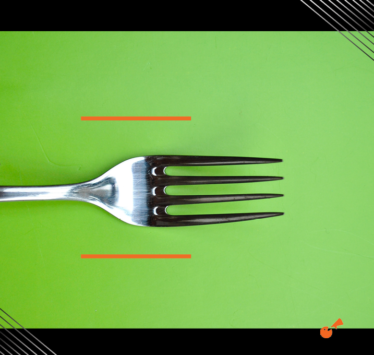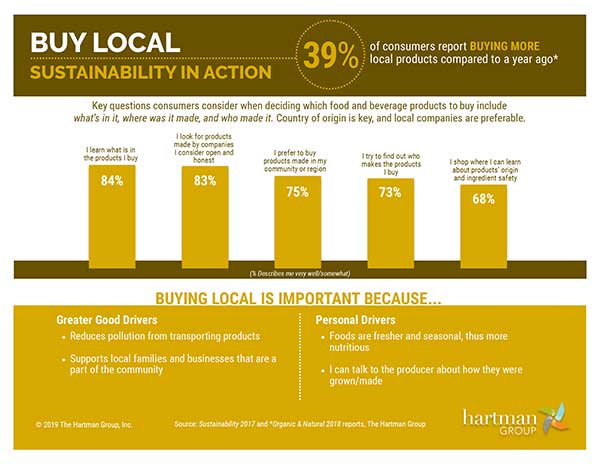
Let’s talk about: FOOD
Food is a hot topic right now.
And it should be!
The basic act of eating has implications on personal health, carbon emissions, sustainability, waste, species’ populations, forested areas and more!
There are so many aspects of this daily activity worth looking at more closely: what we eat, how we prepare it, where we buy it, how we store it, and which specific products we buy.
All these facets of food are prime opportunities to introduce behavioral shifts and new norms that will have a lower impact on the environment.
Yet, they are also quite difficult to achieve, even if you’re only trying to do one of the below AND even as conservationists!!
As a friend in the conservation field just texted me: this behavior change stuff is REAL, huh?!?
For this article
I want to explore the conversations and innovations happening around food behaviors and options.
In each section, I share my own personal efforts on adopting these changes. All to highlight that none of this is easy, but each step we make is one in the right direction.
I recognize that conversations around food differ depending on where you live. This article isn’t global in perspective, but rather it’s representative of the ones I hear around me in the United States.
Let’s give ’em some food to talk about
this is a really long article, so I’ve included links so you can jump to individual sections.
- Eating less meat
- Reducing food waste
- Buying local (and how it compares to organic)
- Eating less fish and seafood
- Buying and storing food without single-use plastics
- What the future holds
Note: I’m not getting paid for any product or service recommendations included in the below. I just like ’em.
Eating less meat
This trend, still in its early phases of adoption but growing quickly, has the potential to seriously shift normative behaviors around what we eat regularly. Which in turn, could have a big impact on protecting the environment.
Granted, we may not see (in our lifetimes, at least) a new norm where most people are vegetarian or vegan. But we are seeing growth in Flexitarian, Climatarian, and other eating styles that have a lower reliance on meat for meals.
And because this is a growing trend (a.k.a. a big business opportunity!!!), eating less meat and more plants is getting easier to do.
Introducing alternative meat
We now have two booming alternative meat brands – Impossible Foods and Beyond Meat – who are creating serious waves in this category by appealing to meat eaters (!!) who would likely never consider eating a veggie burger.
They have deals with White Castle, Burger King, Carl’s Jr. and local fast-food chains to offer vegetarian options on their menus.
WHITE CASTLE, people!!!! The brand that I would have assumed to be the VERY LAST to adopt this trend was the one that launched FIRST.
(And to boot, they launched it with an ad series featuring members of the Wu-Tang Clan. I’m not sure there’s a faster way to my heart.)
This is putting pressure on other fast food chains to add vegetarian and vegan items to their own menus.
And consumers’ desires to have more plant-based options is pushing the food industry to innovate and rethink traditional offerings.
(Although there will be some backlash like Arby’s “meat carrot“. Let’s hope those are fleeting.)
How to message this
The most effective behavior change messages here are not ones that say “give up your meat or we all die”, but rather ones that focus on trying something new and different, that make it cool and fashionable to do so, that focus on the health benefits of the change, and that suggest a realistic starter change such as “Meatless Mondays”.
However, if you have the kind of pull that Jay-Z and Beyoncé do, then you can just TELL people to go vegan to get free concert tickets and they will. (ah…if only we had that star power…)
Bringing it home…
My husband and I recently reached a point where we eat meat, on average, one meal a week.
Our meat-based meals usually occur when we eat out. As we peruse the menu, we’ll look at each other and ask “are you going meat?” (weird, I know).
It took about six months for us to get comfortable with the shift in diet, and we still have weeks where we break our “one meal” goal (July 4th cookouts with leftovers is a recent example of that!)
We could not have made this change without using the Purple Carrot meal kit delivery service. It exposed us to new ways of preparing all-veggie meals, which better equips us to do plant-based meal planning on our own. Including this delicious jackfruit pulled pork I introduced to family and friends at our last cookout.
Reducing food waste
It’s not just about what we eat, it’s also about what we do with the stuff we don’t eat. Including asking ourselves: why are we NOT eating this stuff?
Somewhere in the past, perfection in our food became the standard. Which means it also became the norm to toss the bits and bobs that didn’t fit the mold (note: I didn’t research when/why/how this happened, but if you have that info – then please share!)
Turning trash into treasure
Food companies, supermarkets and restaurants play a big role in the amount of food wasted.
Thankfully, many are also seeing the benefit of creating solutions – here’s a list of companies converting ingredients we consider to be “waste” into brand new product categories.
Another example I like is seeing coffee shops offer drinks made of Cascara, which is the outer husk of the coffee cherry that’s typically discarded.
Moving away from perfection
A slightly different approach is the promotion of misshaped and “ugly” fruits and vegetables that often get passed over at the grocery store. Misfits Market will deliver this type of produce to your house, with the great tagline of “always fresh, sometimes normal”.
Increasingly, grocery stores will offer discounted rates on produce items that don’t look so cute or that may be a day away from going bad. All great movements in shifting norms on what’s good enough to eat.
While the corporate world does play a big part in this, we’re also culpable for contributing our own abundance of food waste at home. This aspect is beginning to gain more attention, but there’s a lot more ground to cover to see norms shifting in this direction.
Bringing it home…
This topic truly grinds my gears. Mainly because I know I’ve been, and still am, a perpetrator of creating food waste. And I hate it.
Inevitably there is that fruit, veggie or head of lettuce (it’s always the lettuce!) that goes bad in the fridge and has to get thrown out. And I kick myself every time.
I haven’t nailed this behavior change, but here are some steps we’ve taken at home:
We compost! More accurately, I put food scraps in a bin and my husband composts (I don’t do dirt).
This can help take some of the sting out of “throwing out” produce and it really highlights how much food we’re not using that we could be (like that dropping knowledge blog I wrote!)
I’ve stopped peeling veggies that don’t actually need it (like carrots – just scrub ’em real good) and have also been saving prime scraps to make homemade veggie stock. It’s a LOT easier to make than I thought and freezes well.
I’ve started pickling and pesto-ing. These are the BEST ways to make yummy use out of greens you may not get a chance to use (like carrot tops) and sturdier greens that don’t make it into recipes (like kale stems).
There have been PLENTY of “who are you, Martha Stewart?” comments thrown my way, but – keep your head up – becoming a pickler ain’t a bad thing.
This cookbook, Waste Not, is full of recipes for using food scraps and it includes a testimonial from Questlove (again, a quick way to win my heart).
Buying local (and how it compares to organic)
When I present the Diffusion of Innovation curve, I sometimes get asked if there’s ever a scenario where a different behavior or product enters and surpasses the existing one trying to climb up the curve.
The answer is YES and a great example is the way that buying LOCAL has started to become more important to consumers than buying organic – for many of the reasons featured in this infographic.

Buying local is not without its challenges, though, as we have all grown to want a wide selection of veggies and fruits, no matter the time of year.
Recipe books don’t help the cause either as they can be very rigid and specific about the list of ingredients.
So, what do you do when your CSA box includes a boatload of garlic scapes or fennel? Will your valiant efforts to support local produce farms result in extra food waste?!?!?! Cue hair pulling.
Truthfully, this topic is still pretty murky for most consumers. And the alternate terms coming out that mean “nearly organic” (integrated pest managed farm, family farm, organically grown, transition farm, etc.) only confuses matters further.
Can’t we just have the dream combo of produce that is free of toxins with low carbon emissions???
Bringing it home…
I’m excited to be an adviser on a cookbook-in-development that is, essentially, a low-carbon cookbook.
It focuses on flexible “un-recipes” that can be easily adapted based on what your CSA, Misfit Market box, or Farmer’s market has in stock. Take a look and download the first 3 recipes to provide feedback.
I also subscribe to a local CSA that supports a variety of local farms based in the Tri-State area.
And yes, I have a boatload of garlic scapes in my fridge right now. Guess what, you can pickle them!!!
Eating less fish and seafood
We don’t talk about this topic enough and I almost feel that conservationists are scared to “go there”.
Maybe rightfully so. It is a complex issue.
I worked on many marine conservation projects and I know how unsustainable large-scale fishing can be. We are consuming fish and seafood faster than it can replenish itself.
On top of that, we have an ocean pollution problem (the water’s a wee bit dirty) and a climate challenge (it’s getting’ hot in thurr) that reduces fish population sizes and healthy habitats.
So why are we still eating this stuff?
Please note: I am NOT directing this question to individuals whose livelihoods and primary source of available food/protein is fish. This tends to be the first response to suggestions of “don’t eat fish”. Communities that have no other viable options can and should continue to sustainably catch and consume local fish.
But there’s a whole lot of other people out there who don’t need it as a primary food or protein source and who aren’t catching it themselves (or buying it from a community member who caught it themselves).
For YEARS, doctors and diet books have been touting the health benefits of fish. I’m not denying or debating that. But I must ask – do these health benefits STILL hold true when we see chemical and micro-plastic levels rising in said fish?? Maybe I can get that Omega-3 some other way, without the side of plastic dots.
- This just out, Impossible Foods is working on a fish-less fish!
As we’re talking more about reducing the number of meat-based meals in our diet, then shouldn’t we also encourage a reduction in fish-based meals as well (again, for those who are able to)?
And don’t just take it from me, the famous oceanographer Dr. Sylvia Earle doesn’t eat fish either…
Bringing it home…
I admit this section is a bit of a rant. I have cut out most fish and seafood in my diet, with the exception of the quarterly craving and splurge I have a hard time resisting.
I actually stopped eating fish initially because the process to determine which was sustainable to eat was too cumbersome. And then I learned that fish are often re-classified as other species when sold at the markets, muddying the waters even further.
Rather than do all that homework, I just decided to cut it out altogether. Since then, my personal opinions on sustainability and health have been added to this rationale.
Buying and storing food without single-use plastics
There is a LOT of improvement to be made in how companies package and sell food, and how we store them at home to reduce our reliance on non-reusable, non-recyclable, and unsustainable materials.
I always have a mini implosion when I go into a grocery store and see all the plastic being used in the organic section. It might be organic, but each bell pepper is also individually wrapped in plastic. WHY???
Better packaging (or none at all)
There are some companies and grocery stores making more of an effort to package their products more sustainably and offer bulk items for bring-your-own containers. But this is still in the innovator stage and I’d love to see it more quickly move higher up the diffusion curve.
Old school is new school
Companies like Loop, which contracts with multiple brands to offer waste-free shopping is a great innovation in this space. I greatly appreciate their perspective on our decision-making processes and how to make a sustainable choice also the most convenient one. From this article:
“When you give the average person the choice between the most convenient option and the most sustainable options, more often than not, the more convenient option wins,” Loop’s vice president of global business development Toni Rossi told Food Dive.
Rather than combat human nature and work to convince consumers that a little sacrifice now will pay off in the long run, Loop plays into the consumer search for an “easy” button, Rossi said.
“It’s a model of reusability, but it acts like single use. We’re not asking the consumer to do anything different than they would today,” he said.
Bringing it home…
Outside the grocery stores, we all have our own issues at home with reducing the use of plastic when storing food.
In the October 2018 edition of my Reader’s Digest, I featured two solutions we use to make a small dent in this: Bee’s Wraps to cover bowls and food instead of saran wrap & Silicon storage bags to phase out Ziploc bags.
Loop is now available in my area and I’ve been thinking about giving it a go. But this is certainly an area for us to do more.
What the future holds
With all these innovative solutions to our food behavior and environmental challenges, where will we head next?
The answer is: BUGS!
Real insects and lab-grown insect cells may be the food of the future. High in protein, low in carbon emissions, and oh so crunchy!
Check out these two recent articles on the growth of the insects-as-food industry.
- Insects tipped to rival sushi as fashionable food of the future
- Lab-grown insect cells could be the planet-friendly ‘meat’ of the future
Bringing it home…
“I just…ate a bug” – Goldie Hawn’s character in Overboard

If at any point during this newsletter you’ve said to yourself “yeah, BUT this new trend happening isn’t going to solve the REAL problem”, then I’d like to refer you to my article on silver bullets. Thank you.


